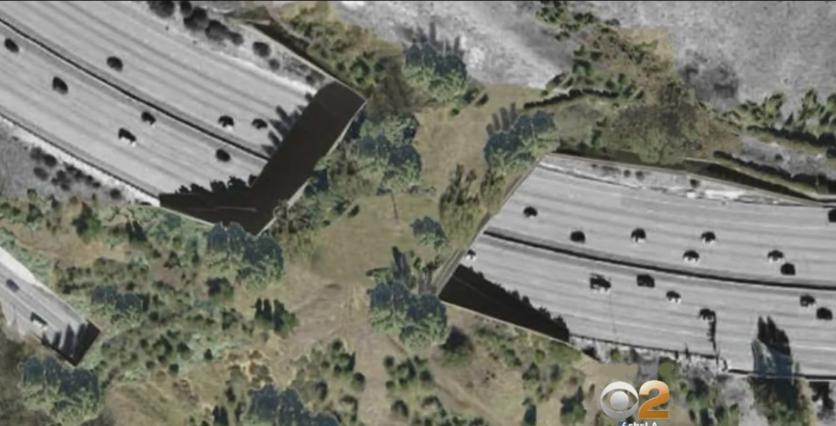CommentsDEEGAN ON LA-Zoning issues, not wildlife protection, is what many think about when hearing the name, “LA Department of City Planning.” But the department, as directed by Councilmember Paul Koretz (CD5), may be signaling that it’s time to make room in developers’ dreams for the wellbeing of the Big Cats, commonly called cougars or pumas -- the mountain lions that make their home in the Santa Monica Mountains.
The challenge of keeping these cats alive and better connected within their habitat appears to be a major goal of the Planning Department as indicated by its recently launched Wildlife Habitat and Linkages Pilot Study which aims “to provide development standards for managing and conserving biological resources by potentially regulating development and wildlife habitats within these areas…” (The hills habitat of mountain lions and other wildlife.)
Councilmember Koretz told CityWatch that “the ordinance that the planning team have been strategizing with my staff and scientists, organizations like CLAW and hillside neighborhood groups is hopefully about 12-18 months away.
"For decades as new home construction has filled in hillside neighborhoods, ancient migratory pathways of native wildlife have been diverted. Remaining gaps of open space have been filled in between wildlife habitats creating bottlenecks that in many instances have permanently corralled wildlife thereby cutting them off from miles of food and separating them from each other,” he continued.
Koretz pointed out, “We are at a point where one new home can block miles of habitat. We are considering new building rules particularly that are on the verge of blocking wildlife corridors from biological resources. That may mean putting trees first in the planning checklist and not building lot line to lot line.”
Man and beast both need to be taken into consideration when a builder sees a pristine hillock in the Santa Monica Mountains that would fit perfectly into his dream house dreams. Providing the mountain lion population with connectivity, the liberty to roam wildlife corridors in search of food and mating companions, will save them from ultimate demise when they are cut off from these goals by fires, fences, and lot line to lot line building that cuts off wildlife corridors.
A scoping type community meeting was held by City Planning on November 7. They are at the very beginning of their published “Fall-Winter Timeline” for this study which includes “listen” (where they say they are now), “share,” “consult,” “analyze,” and “adopt.”
The recent wildfires have accentuated how serious the problem of connectivity is to the survival of the Big Cats.
Way ahead of being in “scoping/listening” status -- but still far from its $60 million goal ($7.5M has been raised so far) -- is the campaign for the Liberty Canyon bridge for wildlife crossing (photo rendering above) that will provide an alternative for wildlife trying to cross ten lanes of freeway and end up as roadkill.
According to Save LA Cougars, the National Park Service (NPS) has studied over 60 mountain lions in the Santa Monica Mountains area since 2002, and reports that attempts “to cross freeways have killed 17 lions since the study began.”
Giving the transiting mountain lions connectivity by using a freeway overpass, such as the Liberty Canyon bridge for wildlife, will go a long way to prevent the certain death they face by jaywalking across the 101 freeway. With or without Liberty Canyon, the mountain lions will continue to roam because as stressed by Save LA Cougars, “the only thing that can save these big cats is the ability to move between regions.”
One of the many tragedies of the recent Woolsey Fire was the burning of the site of the Liberty Canyon bridge that would help the mountain lions to access more territory, mating opportunities, and food sources. There may be an upside to the fire: with some urgency, it tragically demonstrated the need for action, and that may add fuel to the fundraising fire to get Liberty Canyon built.
Other solutions, like those advocated by CLAW (Citizens for Los Angeles Wildlife) can accelerate relief for the wildlife. “We need regulation and conservation”, says CLAW's founding co-director Tony Tucci. “And, speedier means of connectivity that include rapid response by utilizing some of these solutions”. He points to “Crossings” (freeway under and over passes), “Connective Habitat” (uninterrupted connections of large habitat hubs), and “Stepping Stones” (a series of unconnected areas between larger hubs) as ways to do today what the Liberty Canyon wildlife bridge will do years from now.
Instead of the fires forcing our Big Cats to become extinguished, these collective efforts are doing something to make them distinguished, as they deserve to be.
Koretz declared, “The time has come to permanently protect them now and forever. We need to put in these protections before it is too late.”
(Tim Deegan is a civic activist whose DEEGAN ON LA weekly column about city planning, new urbanism, the environment, and the homeless appear in CityWatch. Tim can be reached at [email protected].) Edited for CityWatch by Linda Abrams.
